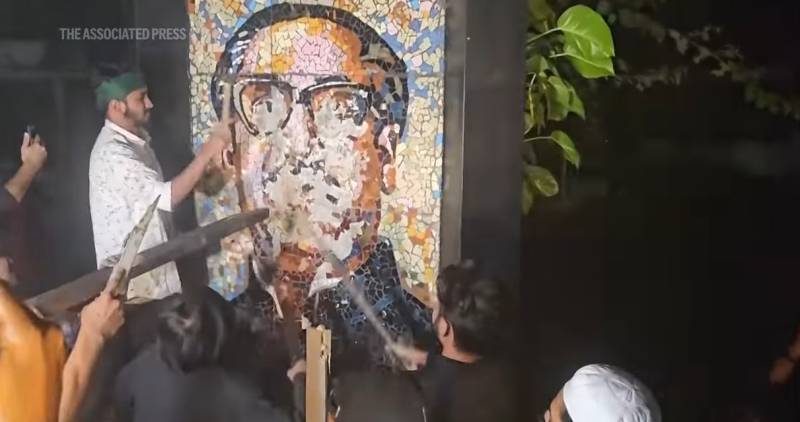
Lucknow: I arrived in Tbilisi, a city where time folds in layers. From the plane window I had seen the Caucasus mountains rise like white walls — Shkhara and Kazbek, Europe’s silent giants. The Mtkvari River wound through the capital, carrying centuries of stories.
Tbilisi – Where East Meets West
Walking into the Old Town, I lost myself in narrow alleys, Persian-style sulphur baths, and wooden houses with carved balconies. Above it all, the Narikala Fortress watched like a sentinel of Georgia’s turbulent past — a past that includes the Persians, Ottomans, Mongols, and Russians.
Yet this was not only a city of ruins. Rustaveli Avenue spoke of 19th-century Russian grandeur, while the Bank of Georgia’s Brutalist tower and the glass Bridge of Peace symbolized Georgia’s Soviet legacy and modern ambition. At dinner, my host invited me to a supra (traditional feast). Around a crowded table, led by a tamada (toastmaster), I tasted khachapuri, khinkali, and the sweet chew of churchkhela. Every toast was not just to friendship, but to God, ancestors, and homeland. I realized here that hospitality is Georgia’s oldest architecture.
The night ended with polyphonic singing — the UNESCO-listed harmonies echoing as if the mountains themselves were humming.
Kutaisi – The Echo of Kingdoms
A winding train took me west to Kutaisi, once the capital of Colchis, the land of Jason and the Argonauts. Standing inside the Bagrati Cathedral and Gelati Monastery, I felt the weight of Georgia’s medieval golden age, when King David the Builder and Queen Tamar envisioned a united, enlightened kingdom.
But Kutaisi also bore the imprint of the Soviet Union: functional housing blocks, cultural palaces, and echoes of heavy industry. The futuristic Parliament building, now abandoned, looked like a stranded spaceship — a symbol of Georgia’s restless transition from past to present.
In the evening, over a glass of amber wine from qvevri clay vessels (a method dating back 8,000 years), locals told me about Georgia’s ethnic mosaic — Armenians, Azerbaijanis, Mingrelians, Svans — and their shared struggles since independence.
Batumi – The Black Sea’s Playground
The train rolled further west to Batumi, a city that felt more like a theatrical set than a port. On one street, I found neo-baroque villas from the 19th century; on another, Soviet sanatoriums crumbling in silence. Then suddenly the skyline erupted: the Alphabetic Tower, the Ferris-wheel skyscraper, and the Sheraton lighthouse glowing at dusk. Batumi was Georgia’s Dubai experiment — wild, flamboyant, yet still Georgian at its heart.
In the markets, citrus and tea reminded me of the 19th-century plantations introduced here. Locals urged me to try Sulguni cheese with spicy Megrelian dishes, proof of how each region of Georgia speaks in flavors as much as dialects.

Into the Mountains – The Spirit of the Caucasus
No journey in Georgia is complete without the highlands. I headed north to Svaneti, where stone Svan towers rise against the snow. Villagers spoke in the Svan language, different from Georgian, and guarded traditions older than memory.
Farther east in Tusheti, shepherds led flocks across alpine pastures, and I understood why family, religion, and land form Georgia’s strongest triad. The Orthodox churches here are not only places of prayer, but anchors of identity in a nation that has faced wars, invasions, and Russian pressure.
At a roadside café, a driver spoke of the 2008 war, of Abkhazia and South Ossetia, of peaceful protests and the Rose Revolution. His words carried the weight of a small country negotiating giants — yet also the pride of a people who see themselves as European in spirit, Caucasian in soul.
The Final Toast
On my last night, as the Black Sea waves crashed in Batumi, I raised a final glass of Kakhetian wine. Georgia had shown me everything: ancient Christian cathedrals and pagan myths of the Golden Fleece; Soviet megastructures and futuristic towers; fiery dances and sacred polyphony; feasts overflowing with bread, cheese, and wine.
But more than landscapes or buildings, what lingered was the spirit of its people: resilient, hospitable, poetic, and fiercely proud of being Georgian.
As the tamada toasted to “peace, land, and guests,” I knew Georgia was not just a place to visit — it was a place to return, again and again, at the crossroads of mountains and myths.





